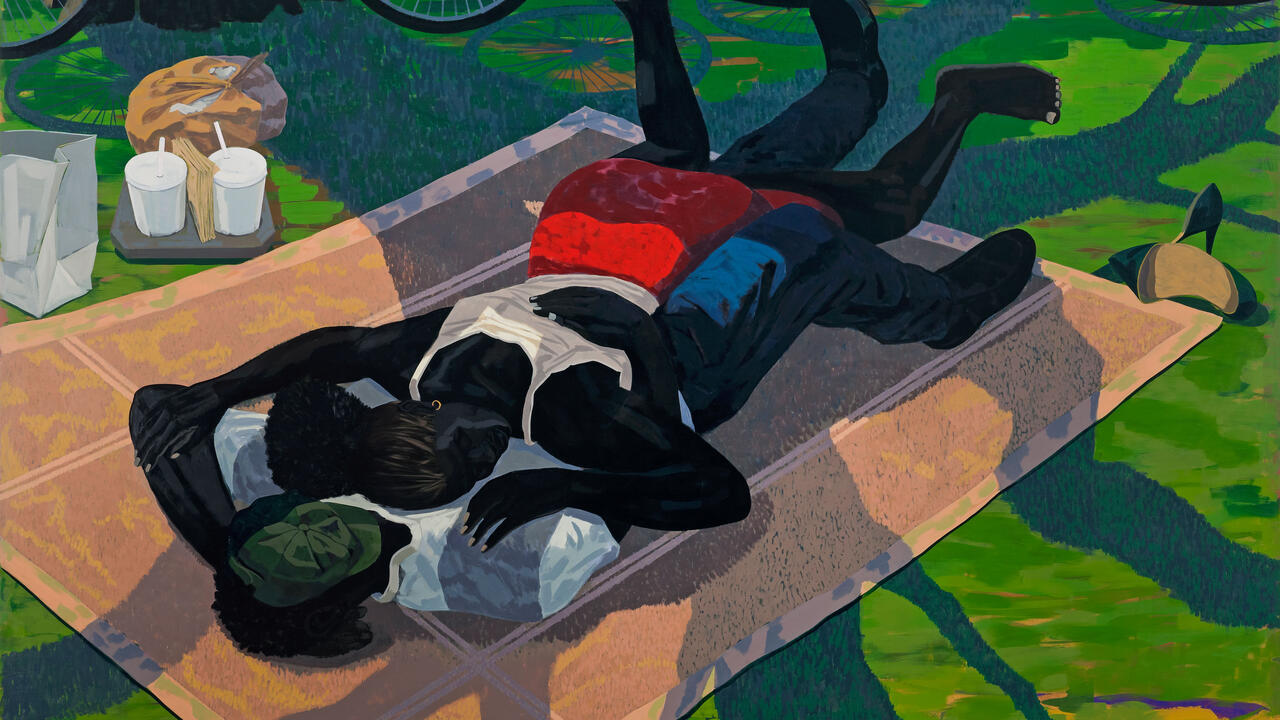Sahej Rahal’s Virtual Biomes Shake up Old Myths
In Bashinda (2020), Rahal constructs an imaginary world very much rooted in India’s current sociopolitcal landscape
In Bashinda (2020), Rahal constructs an imaginary world very much rooted in India’s current sociopolitcal landscape

Sahej Rahal’s Bashinda (2020) – commissioned for the now-postponed 13th Gwangju Biennale – is the fourth in the artist’s series of virtual biomes. Experienced as footage of a game played by an AI, Bashinda, the Hindi-Urdu word for inhabitant, refers to the game’s main character: a 12-limbed, terrestrial cephalopod with a faceless torso-head like a rock formation. As with most third-person perspective games, the landscape only comes into view when Bashinda moves across it, dragging a virtual camera. The simulated environment comprises wavering patches of grass, ever-blossoming trees, ground-grown cubic forms and other cephalopodic creatures.

Rahal’s design for an imaginary elsewhere is rooted in India’s current sociopolitical landscape, where a legislative double-state of exemption and exclusion has been recently grafted onto age-old structures of religious and ethnic discrimination. The word bashinda implies the tension that lies in how residence flickers between citizenship and denizenship. Along with its juridical engineering, Hindu supremacism functions as a reductive myth monopoly. Much like other atavistic ethnonationalisms, it banks on the injected liquidity of retrofitted narratives of heritage and belonging, which preserve caste as the core anatomy of Indian society. In fact, canonical fictions of innate hierarchy have been historically anthropomorphized in the body of Manu (the archetypal saviour and progenitor of earthbound humanity in Hindu mythology), whose head represents the highest classes and whose limbs, given their distance from the assumed seat of intellect and consciousness, represent the lowest.

Rahal’s art is a mytho-technical aesthetic, employing time-based audiovisual media to render plausible multi-environmental temporalities. Through Bashinda, the anthropic coordinates of concrete experience are abstracted without entirely abandoning materiality, approximating a posthuman condition. Yet, similar to Rahal’s other virtual biomes, Bashinda also exhibits a critical exercise in ethnofuturist worldmaking, insofar as it wonders what environments might emerge, what beings might rise and what myths might be told if the inherited distances that maintain monopolies of cultural imagination were to collapse.
Sahej Rahal is an artist and filmmaker. He is a recipient of the Junge Akademie of the Akademie der Künste’s 2020 Human Machine Fellowship and the 2020/21 Digital Earth Fellowship.
This article first appeared in frieze issue 216 with the headline ‘Earthbond’.
Main image: Sahej Rahal, Bashinda, 2020. Courtesy: the artist and Chatterjee & Lal, Mumbai





















